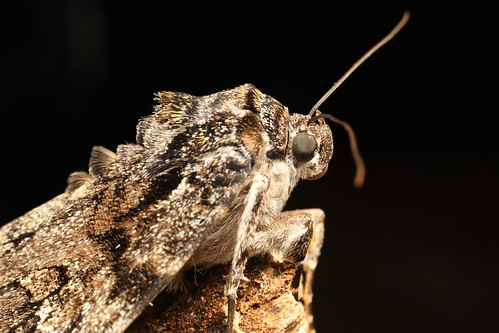Ne neįprasta drugys, bet pasižymintis žvilgsniu. Tai yra Catocala Ilja (Erebidae) ((anksčiau Noctuidae)), ir jis minta saujele ąžuolų. Į mano šviesą jis pateko savaitgalį Pietų Ilinojuje, žemyn valstybinio miško „Ašarų taku“. Kaip ir daugelis kitų kandžių, ši plačiai paplitusi rūšis turi keletą variantų, kurie gali pasirodyti skirtingi – kol rūšių monografijos…
Aš dabar pasviręs gražių kandžių vaizdų sauja, todėl tikėtis, kad daugiau pirmadienis kandys! (nors tai penktadienį drugys).


How can I resist a post title such as yours? A monograph? Whom, pray-tell, might be publishing such a useful work? =)
Ignoring the otherwise very moth-y appearance of your highlighted moth, in isolation, it’s antennae would certainly have me scratching my head when going through my VERY crude “moth-or-butterfly” examination. Taip, are the tips of the antennae the same width as the rest, generally, no bulb or some such? And feel free to edify if I’m off base. =) I know if I see feathered I think moth, and if I see a bulb or other larger-then-rest-of-antennae blob at the terminus, I think butterfly. Can you clarify/correct/confirm that and apply to this individual?
Ačiū, and looking forward to subsequent posts.
ugh, WHO, not whom. pardon. =)